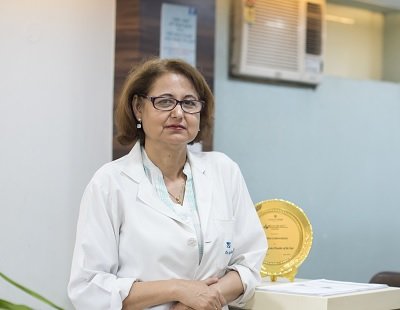Future trends for diagnostic industry in 2022
December 08, 2021 | Wednesday | Views
Online marketing, telemedicine, and employing social media as a tool for building brand awareness will make tremendous strides
Diagnostics are the mainstay of the detection, diagnosis and assessment of any disease. Over 70 per cent of the medical decisions regarding disease treatment, management and prevention are based on diagnostics. They are a crucial tool in preventive healthcare as well.
While all through 2020-21, the diagnostics industry was primarily driven by the COVID-19 pandemic, it has been rapidly trying to keep pace with the Sars-Cov-2 virus and its emerging new mutants in a veritable combat mode to meet the huge challenge in catering to the deluge of urgent doorstep sample collection, quick turnaround time and speedy delivery of reports, it has been pushed into devising innovative techniques and newer tests to deal with the same with upgraded equipment and implementing the latest software applications to scale-up to the demand of the burgeoning volume of tests required to be conducted, while keeping a sharp eye on quality control and accuracy and affordability.
All the while, it is to be borne in mind that it had to cope with tremendous pressures of limitations like social distancing in the lockdown scenario, and yet spruce up its act in bridging the gap in the demand-supply chain, despite a lack of skilled technicians, and managing and collating a humungous volume of data, and keep up with the extensively hectic research and development in the field.
The pandemic scenario has accelerated an entire paradigm shift in the diagnostics industry, heralding an era of phenomenal revolution concerning its scope and capacity, and auguring glad tidings for unprecedented economic growth.
Healthcare has become one of India's largest sectors, both in terms of revenue and employment. The COVID-19 pandemic has impacted the level of health awareness, and the need for quality preventive healthcare and health insurance in the most positive manner, shaping new consumer-friendly models of care delivery for all. Consumerisation, automation and consolidation are three trends to look out for.
The way forward for diagnostics is point-of-care testing,
self-testing kits, genome testing and the implementation of artificial intelligence (AI)-based analytic solutions to cope with the anticipated increase in the total volume of tests in future in the wake of a possible third wave and its aftermath. The global point of care diagnostics market is segmented based on product, end-user, mode of prescription, and geography. Globally, the size of the point of care diagnostics market was valued at $22,975 million in 2015 and is expected to reach $43,336 million by 2022, growing at a CAGR of 9.4 per cent from 2016 to 2022.
In India, the diagnostic industry stands at a whopping Rs 675 billion and is estimated to grow at a rapid annual rate of <10 per cent over the next five years, egged on by increasing wellness and healthcare awareness (due to which home testing has come into being in a much bigger way), rapid rise in lifestyle diseases like diabetes and cardiovascular diseases due to sedentary lifestyle, preventive healthcare testing, insurance services, and the overall rise in the spending power of people among all strata of society. Of this Rs 675 billion market, stand alone centres constitute 47 per cent of the market, hospital labs constitute 37 per cent and diagnostic chains constitute 16 per cent of the market share, respectively. From a $9 billion market in 2018, it jumped from a 6 per cent growth overall to 20-25 per cent. Digital and technological innovations are now integral to this industry, supported by its national health policies and programs that aim to make affordable healthcare accessible for all sections of society, including the rural population. This resulted in a proper assessment of the country’s disease burden, disease trends and effective collation of data, and extensive emphasis on research. The government has spruced up its efforts to provide incentives for growth in the domestic medical devices industry and also encouraging FDI (Foreign Direct Investment), to achieve a leading rank in the medical devices manufacturing industry. Furthermore, marketing communication techniques are showing a huge improvement as well – e.g. health tracking applications, telemedicine, online consultation, highly sophisticated data collation software applications, increased awareness of diagnostic tests and health insurance services – to name a few.
The healthcare market can increase three-fold to Rs 8.6 trillion ($133.44 billion) by 2022. In Budget 2021, India’s public expenditure on healthcare stood at 1.2 per cent as a percentage of the GDP. The Govt. of India aims to increase healthcare spending up to 3 per cent of its GDP by 2022. The healthcare market can increase three-fold to Rs. 8.6 trillion ($ 133.44 billion) by 2022. This is also expected to boost employment in the healthcare sector and generate 2.7 million jobs between 2017 and 2022.
2022 will see a boost in the demand for preventive and curative healthcare. Innovative technology like robotic process automation has emerged as a logical solution at high-end diagnostic centres, along with digitisation to cover the lacunae in the area of skilled lab technicians and personnel, as well as improved precision and quicker results. To support these innovations, advanced equipment and machinery have further exhibited a hugely positive impact on the diagnostic services market. Online marketing, telemedicine, and employing social media as a tool for building brand awareness will make tremendous strides. The easy availability of doorstep collection, walk-in services and quick results is a huge boost for the diagnostics industry.
--- Dr Angeli Misra, Director Lifeline laboratory










